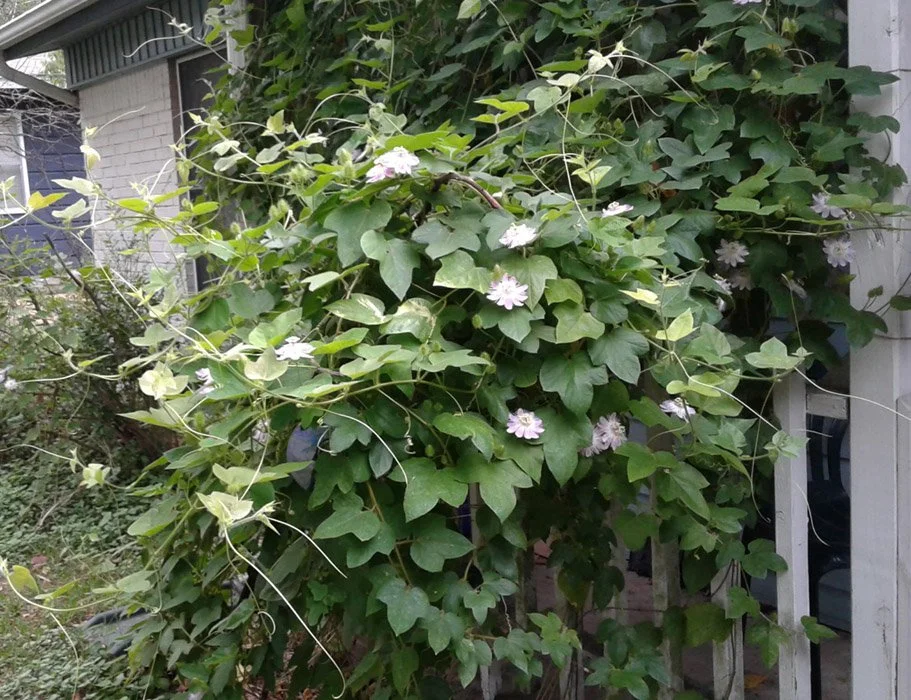Caterpillars vs. the Bees
Pendulum swings in the yard during and after drought
One recent year, Central Texas experienced a severe late-summer drought. I watered the passionsflowers every day, so they continued to bloom. Every morning, I would watch the wool carder bees working hard to pollinate the flowers as I avoided disturbing them with the hose. It was incredibly hot, over 100 degrees most days, but the flowers and bees were happy. The vines stayed healthy, yet the butterflies - and their caterpillars - disappeared.
Then finally, it rained. A deep soaking rain.
The yard exploded. Every plant put out flowers, every bug began the reproduction cycle, not just a few here and there, but everywhere, all at once. The lantanas looked like huge bouquets growing out of the ground.
[Picture: one side of the peaking flowers with at least 16 blooms visible]
The passionflower vines erupted in blossoms, too. I had never seen so many at one time - over 30 between the two masses of vines. The bees had almost more blooms than they knew what to do with. Along with the other insects, Gulf Fritillary butterflies returned in force, laying eggs on every available leaf and tendril. Soon the caterpillar assault was on.
At first I was elated. I had wondered where they went, and was relieved they could rebound so quickly. With the vines being healthy through the drought, there were plenty of leaves to eat. But soon the plants showed stress. Even with all that foliage, the constant munching slowed flowering to a crawl.
I continued to watch the bees every morning, well aware that there were fewer and fewer flowers for them. Then one morning, large caterpillars all over the vines, something unusual happened. Almost a dozen carder bees gathered near the top of the vines, hovering close to a half-dozen caterpillars, as if in a kind of summit meeting. Some individual bees even moved closer to inspect the caterpillars, then returned to the group.
And then they all left - never to return that year.
The caterpillars peaked, the vines recovered somewhat and a few flowers appeared here and there. But I didn’t see the carder bees again until the following year. I expected the butterflies to really overwhelm the vines with a second generation, but that didn't happen. The frenzy settled down to a normal pace.
The caterpillars may have seemed to win that round, but really, the bees won, too. They had flowers during the drought, then a brief bounty, and moved on when the vines were taken over. In the end, the balance held. Everyone got their share.
